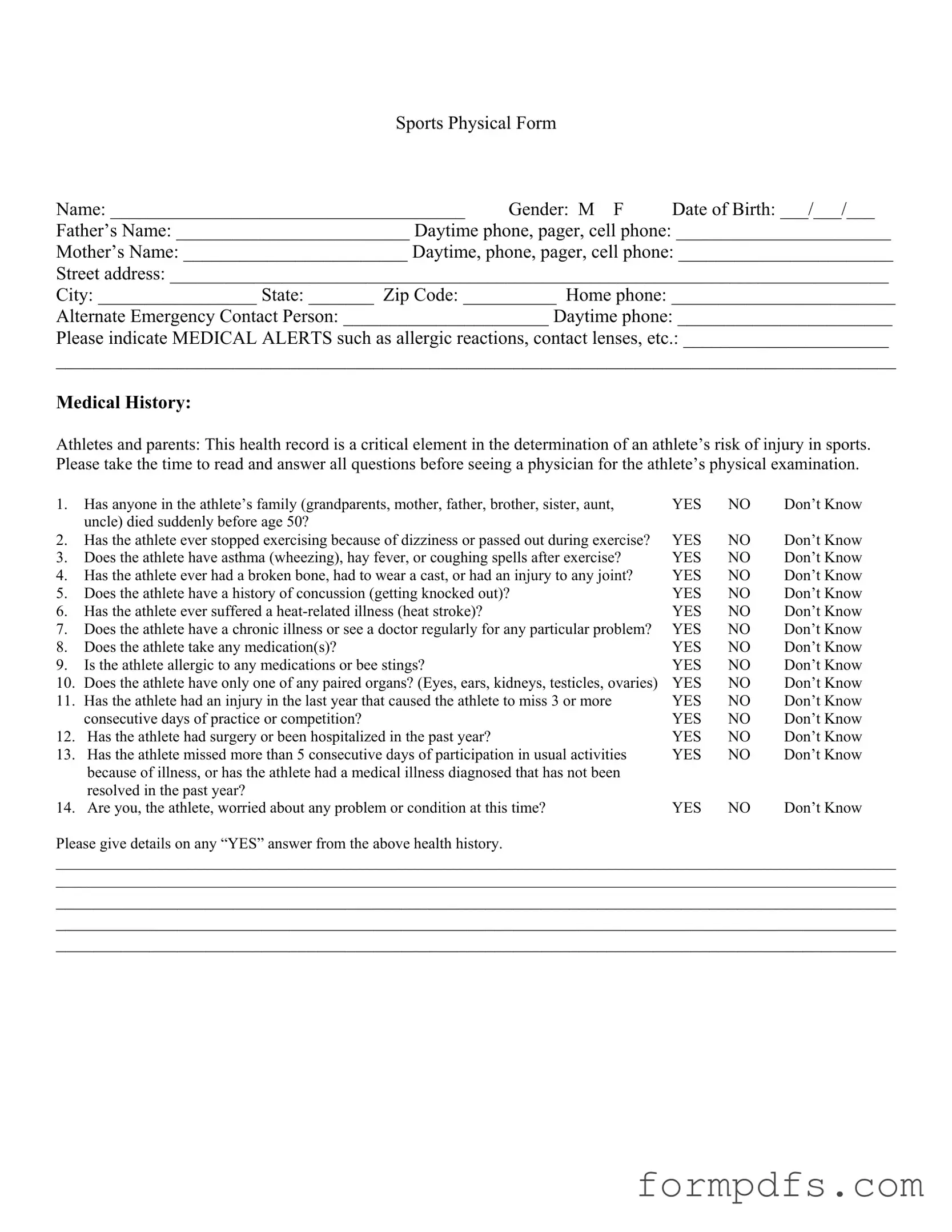What is the purpose of the Sports Physical form?
The Sports Physical form is designed to assess an athlete's medical history and current health status. This evaluation helps determine the athlete's readiness to participate in sports activities. It identifies any potential health risks that may affect the athlete's safety during physical exertion. Parents and athletes must complete the form accurately to ensure a thorough evaluation by a physician.
Who needs to fill out the Sports Physical form?
All student-athletes participating in school sports programs are required to complete the Sports Physical form. This includes students at various educational levels, from middle school through high school. Parents or guardians must assist younger athletes in filling out the form, ensuring that all medical history and emergency contact information is accurately provided.
What information is required on the Sports Physical form?
The Sports Physical form requires personal information such as the athlete's name, gender, date of birth, and contact details for parents or guardians. Additionally, it includes a detailed medical history section that asks about family medical history, previous injuries, chronic illnesses, medications, and allergies. This information is crucial for the physician to make an informed assessment of the athlete's health.
How often should the Sports Physical form be completed?
The Sports Physical form should be completed annually or whenever a new sports season begins. This ensures that any changes in the athlete's health status are taken into account. Some schools may have specific deadlines for submission, so it is important to check with the school’s athletic department for their requirements.
What happens after the Sports Physical is completed?
Once the Sports Physical is completed, the physician will review the athlete's health and determine if they are medically qualified to participate in sports. The physician will sign the form to certify their evaluation. If any health concerns are noted, the physician may recommend further evaluation or restrictions on participation. The completed form should then be submitted to the appropriate school authorities.
